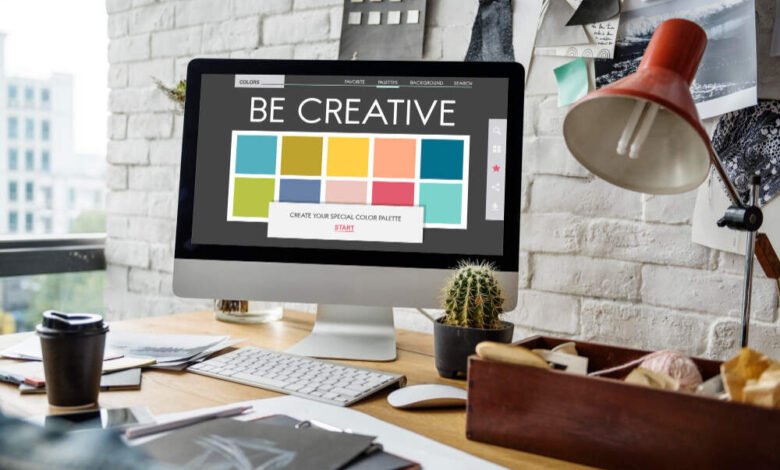
Social media is a wonderland of design for brands. Marketers have exciting opportunities to experiment and engage with audiences through new visuals.
Social media can be challenging. It is easy to make mistakes in design because the networks are so dynamic and different. This can annoy users or dampen engagement.
What are some of the most common design mistakes that marketers need to avoid? What are the most common mistakes that consumers tend to notice? Seven key social media design mistakes that brands of any type should avoid:
Big Design Mistakes on Social Media to Avoid
1. Use the wrong image sizes and resolutions
Wrong approach: Different social networks have different guidelines for the correct size of key design elements, such as headers, avatars and so on. In addition, each platform has different guidelines on size for different experiences.
In addition, images and graphics are often subject to a variety of resolution requirements. It is a big mistake to get any of these wrong: design elements with the wrong resolutions and sizes display badly and are easily noticed by audiences.
It’s not a shortcut. You have to find out the best sizes and resolutions to use for each platform, and then create variations to your creative that meet these needs. Check out this guide to find out the requirements for each network.
Note: If you reside in Surat and have an interest in pursuing offline courses, DecodeX offers “graphic design courses in Surat” and “UI/UX design courses in Surat” that can assist you in achieving your marketing objectives.
2. Failure to account for small mobile screens
It’s the wrong approach. 96% of Facebook users use mobile devices, while only 25% access it via a desktop or laptop. In the case of mobile-first platforms such as Instagram, almost 100% of users use smartphones and tablets.
Many brands still design with desktops and laptops in mind. They create images and graphics which look good on large test screens but do not scale well when used in mobile environments.
BuzzFeed has the right approach. It is a smart organization that knows how to use social media on devices. This is evident in the publisher’s designs, including backgrounds and icons that are simple but stand out when viewed on smaller screens.
3. Designing Designs That Are Too Busy
A busy design can easily get lost in the crowd of mobile content and small screens. Less is more when it comes to standing out in a sea of content on small screens. The more obvious and recognizable an image is, the better chance it has of being noticed.
Kylie Jenner’s cosmetics empire is worth hundreds of millions of dollars, and she has done it primarily by using social media. The posts are usually not flashy or overly complicated: they simply and effectively showcase products with clear visuals and plain backgrounds.
4. Utilizing Too Many Fonts
Fonts are having a great time. Brands have so many fonts to choose from – serif fonts and sans-serifs, script fonts and decorative fonts – that it’s tempting to use them all on social media. Don’t do it. It’s not worth it.
The right approach is to use different fonts (judiciously) if you’re trying to convey hierarchy or to make something like the title of a graphic pop out. Consistency is also important.
Apple has always used the same typography throughout its history. This includes social media. It ensures that people associate Apple’s brand with even the appearance of letters.
5. Over-Reliance on Generic Stock Images
Wrong approach: With the increase in content production and shorter turnaround times, marketers are increasingly relying on stock services to provide their visuals.
This can result in posts from brands that look similar. The same generic images tend to blend into each other because they are repeated so often.
Right approach: Brands such as Mailchimp, an email platform, have invested in creating their illustrations and imagery to ensure that their content is unique in social feeds.
If this is not feasible due to time or cost constraints, marketers still have the option of using stock images in creative ways. They can do so by adding overlays and filters and making unconventional choices.
6. Designing for individual platforms is not possible
Wrong approach: Brands sometimes rush to publish posts on social media, forgetting that not all platforms are the same. It is important to take into account the differences in user behaviour, feed display, and design requirements.
It can be uncomfortable to have content that is blasted out across multiple networks without optimization.
Wendy’s has a great understanding of social media, which is evident in the way it customizes its content for different platforms. In the following examples, one for Twitter and another for Instagram.
Different versions of the graphic were created to make sure that the content would display well on the various feed formats. The changes might seem small, but they can have a significant impact on engagement.
7. Being inconsistent with your brand identity
Wrong approach: Brands must tread a thin line when it comes to their social media content. Posts should be distinct but also have a thread that unites them. This visual consistency is essential to a brand’s identity. Without it, pieces can seem disconnected and have a reduced impact.
A brand identity does not mean every post must be identical. Instead, there should only be a few elements that are consistent and have a visual theme. The two tweets from Nike below, separated by only two months, demonstrate this.
The two images are very different in terms of colour, framing and other elements. However, the swoosh symbol, along with the modern and triumphant tone, binds them together.
In the end, good social media design is about getting both big and small details right. Brands should not lose sight of the overall visual identity and platform behaviour, but instead, focus on small details like fonts and image sizes.


